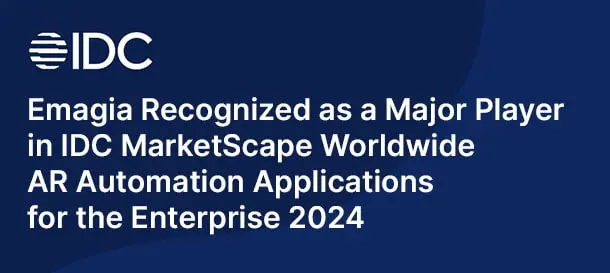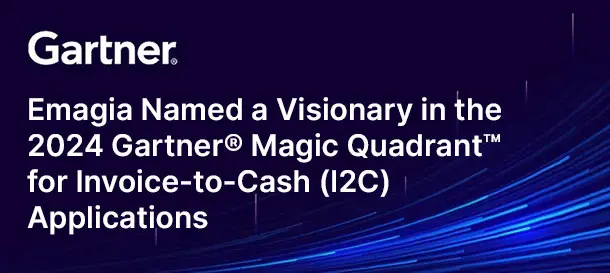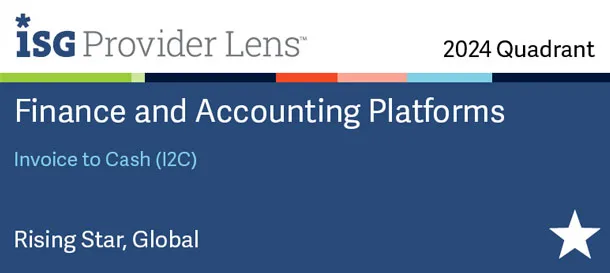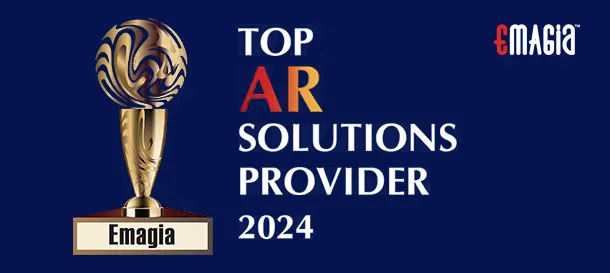Cash application automation is rapidly transforming finance operations in 2026. CFOs are leveraging AI, machine learning, and cloud-based platforms to streamline accounts receivable automation, optimize working capital, and achieve real-time liquidity visibility.
Introduction to Cash Application Automation
Cash application automation is the process of applying incoming payments to invoices with minimal manual intervention. This technology accelerates accounts receivable (AR) operations, reduces errors, and improves financial efficiency.
Importance for CFOs
CFOs are at the forefront of digital transformation in finance. Automated cash application enables them to gain strategic insights, reduce operational costs, and improve cash flow predictability.
Key Benefits
- Faster cash posting and reconciliation
- Reduction in days sales outstanding (DSO)
- Improved working capital management
- Enhanced accuracy and compliance
- Real-time insights for financial decision-making
Cash Application Trends for CFOs in 2026
AI-Powered Cash Posting
AI automates matching payments to invoices, reducing manual errors. CFOs can now rely on accurate, near real-time allocation of payments.
Autonomous Cash Matching
Machine learning algorithms automatically resolve payment discrepancies. Autonomous matching improves AR efficiency and reduces manual workload.
Predictive Analytics for AR
Predictive analytics forecasts incoming cash, highlights overdue accounts, and helps CFOs prioritize collections for optimal cash flow management.
Intelligent Document Processing
AI-driven document recognition streamlines processing of remittance advice, reducing manual effort and increasing touchless automation.
End-to-End O2C Automation
Modern intelligent O2C platforms integrate order management, invoicing, and cash application to optimize the full finance workflow.
ERP Integration
Cloud-based automation tools integrate seamlessly with ERP systems for real-time bank-to-ERP reconciliation and accurate cash posting.
Autonomous Finance Ecosystem
AI and hyperautomation connect accounts receivable, credit management, and collections for a unified, autonomous finance ecosystem.
CFO Priorities in 2026
Accelerating Working Capital
CFOs leverage AI-driven reconciliation to reduce DSO, unlock liquidity, and improve working capital efficiency.
Automation-Led Finance Efficiency
Touchless finance automation minimizes manual effort, reduces operational costs, and improves accuracy across AR and cash posting processes.
Data-Driven Decision Making
Dashboards, predictive analytics, and intelligent reporting provide CFOs with actionable insights to make informed financial decisions.
Generative AI in Accounting and Finance
Generative AI supports automated reporting, anomaly detection, and intelligent communication across AR and cash application workflows.
Connected Finance Architecture
Integrating AI-driven cash application with ERP, CRM, and treasury functions ensures a connected ecosystem for real-time liquidity visibility.
Benefits of Automation for Enterprises
Reduced Errors
Automation eliminates repetitive tasks like invoice matching, posting, and reconciliation, increasing accuracy and operational efficiency.
Faster Cash Posting
AI-powered cash allocation ensures quicker posting of payments to invoices, accelerating cash flow cycles.
Predictive Cash Flow Insights
Machine learning models forecast cash inflows, highlight overdue accounts, and support proactive AR strategies.
Scalability and Flexibility
Cloud-based AR automation solutions scale with growing transaction volumes and business expansion.
Future Trends CFOs Must Watch
AI Agents in Order-to-Cash
Autonomous AI agents manage cash application, remittance matching, and dispute resolution, reducing dependency on manual processes.
Hyperautomation in Finance Operations
Combining RPA, AI, and machine learning automates the entire cash application process, enabling finance teams to focus on strategic tasks.
Real-Time Liquidity Visibility
Advanced dashboards provide CFOs with a comprehensive view of cash positions across subsidiaries, customers, and bank accounts in real-time.
Smart Reconciliation Engines
Intelligent reconciliation engines detect anomalies, auto-resolve mismatches, and update ERP systems without manual intervention.
Predictive Working Capital Optimization
Predictive models guide CFOs in decision-making related to cash allocation, AR prioritization, and liquidity management.
Deep Dive: AI in Cash Application Automation
Artificial intelligence is no longer just an experimental tool; it has become essential in modern accounts receivable. CFOs are leveraging AI to automate cash posting, intelligently match remittances, and forecast cash inflows accurately.
AI-Powered Cash Posting
AI algorithms automatically identify and apply payments to the correct invoices, even when customer references are incomplete or inconsistent. This reduces human intervention and speeds up AR processes.
Autonomous Cash Matching
Machine learning models recognize patterns in historical payment behavior, resolving discrepancies automatically. CFOs can now trust that cash is correctly applied without continuous manual checks.
Predictive Analytics in AR
By analyzing historical payment data, predictive analytics allows CFOs to forecast cash inflows, identify potential late payments, and prioritize collection efforts effectively. This insight helps optimize working capital.
End-to-End O2C Automation Trends
The future of finance operations is fully automated order-to-cash (O2C) processes. CFOs are adopting intelligent O2C platforms that cover everything from order management to cash application.
Integration with ERP Systems
Cloud-based cash application tools integrate seamlessly with ERP platforms, enabling real-time reconciliation and automated updates to accounting ledgers. This reduces errors and ensures accurate financial reporting.
Intelligent Document Processing
Automated OCR technology reads and processes remittance documents, invoices, and payment notifications. This minimizes manual data entry and speeds up cash application workflows.
Hyperautomation for CFOs
Combining AI, machine learning, and robotic process automation creates hyperautomation in finance, allowing CFOs to focus on strategy rather than routine processing.
Cash Application Trends Driving CFO Priorities in 2026
Real-Time Liquidity Visibility
CFOs now have dashboards providing real-time visibility into cash positions across bank accounts, subsidiaries, and customers. This insight enables proactive financial decisions.
Working Capital Optimization
Automated cash application accelerates collections and reduces DSO. Predictive analytics helps prioritize invoices that require attention, improving liquidity and working capital efficiency.
Autonomous Remittance Matching
AI-driven systems identify mismatched payments and autonomously allocate cash, reducing manual reconciliation and improving AR accuracy.
Digital Transformation in Finance Operations
Adopting cloud-based AR automation is part of broader digital finance strategies. CFOs focus on creating a connected finance ecosystem that combines AR, credit, and collections processes.
Generative AI for AR Insights
Generative AI provides actionable insights, such as detecting anomalies, recommending allocation priorities, and automating reporting. This supports CFO decision-making and accelerates cash flow management.
ROI and Business Impact of Cash Application Automation
Reduced Operational Costs
Automation reduces the need for manual labor in cash posting and reconciliation. Organizations save on salaries, training, and human errors that may lead to financial discrepancies.
Improved DSO and Liquidity
Faster cash posting, accurate remittance allocation, and predictive collections reduce days sales outstanding (DSO) and increase available liquidity.
Enhanced Compliance and Audit Readiness
Automated cash application leaves a clear, traceable audit trail. CFOs can ensure compliance with regulatory requirements and internal policies.
Scalability for Growing Businesses
Cloud-based automation solutions scale easily with increased transaction volumes, geographic expansion, and complex AR operations, ensuring consistent performance.
Best Practices for CFOs Implementing Cash Application Automation
Start with Data Accuracy
Ensure that master data is clean and updated before implementing AI-driven automation. Accurate customer and invoice data is essential for effective cash application.
Integrate Systems Seamlessly
ERP, CRM, and treasury systems should be integrated to provide a unified view of AR and cash positions. This enables real-time insights and reduces reconciliation issues.
Leverage Predictive Analytics
Use historical payment data to forecast cash inflows and prioritize collections. Predictive analytics helps CFOs make proactive financial decisions.
Monitor KPIs Continuously
Track metrics such as DSO, unapplied cash, and exception rates to measure the effectiveness of cash application automation and continuously improve processes.
Adopt AI Incrementally
Start automation with high-volume, repetitive tasks. Gradually expand AI capabilities to handle complex exceptions, autonomous matching, and predictive forecasting.
Emerging Technologies in Cash Application Automation
Finance teams are increasingly leveraging cutting-edge technologies to modernize cash application processes. CFOs need to be aware of innovations that can transform accounts receivable and working capital management.
Generative AI in Cash Application
Generative AI assists in predicting payment patterns, automatically generating remittance allocation suggestions, and drafting AR exception reports. This reduces manual work and enhances accuracy.
Autonomous Finance Ecosystem
Autonomous systems connect AR, credit management, collections, and treasury operations. CFOs benefit from real-time insights, predictive liquidity forecasts, and automated decision-making.
Intelligent O2C Platforms
Modern O2C platforms integrate order management, invoicing, and cash application. Intelligent algorithms optimize workflow, automate reconciliations, and enable CFOs to oversee operations from a single interface.
Touchless Finance Automation
By combining robotic process automation (RPA) and AI, touchless finance allows cash application processes to run with minimal human intervention, ensuring speed and accuracy in payments posting and reconciliation.
Smart Reconciliation Engines
These engines automatically match incoming payments with invoices, detect anomalies, and suggest corrective actions, minimizing manual reconciliation efforts and errors.
CFO Digital Priorities in 2026
Accelerating Working Capital Efficiency
CFOs are focused on reducing DSO and optimizing cash flow. AI-driven cash application allows them to prioritize collections, predict overdue accounts, and manage liquidity proactively.
End-to-End AR Automation
From invoice issuance to cash application, end-to-end automation ensures efficiency and accuracy. CFOs can focus on strategic tasks rather than manual operations.
AI-Powered Insights for Decision Making
Dashboards and predictive analytics provide CFOs with actionable insights for cash management, financial forecasting, and scenario planning.
Connected Finance Architecture
Integrating AR automation with ERP, CRM, and treasury systems provides CFOs with a unified view of all financial data. This connected architecture supports informed decision-making and strategic planning.
Cloud-Based AR Automation Tools
Cloud solutions offer scalability, remote access, and enhanced security. CFOs can monitor cash application and AR operations in real-time from anywhere.
AI-Driven Remittance Matching
Automated AI systems match payments accurately to invoices, even in cases of partial payments or missing references, reducing exceptions and manual intervention.
Predictive Analytics for Liquidity Management
By analyzing historical payment patterns, CFOs can forecast cash flow, plan working capital requirements, and make proactive financial decisions.
Benefits of Advanced Cash Application for CFOs
Reduced Errors and Increased Accuracy
AI-powered and autonomous systems minimize human errors, ensuring accurate cash application and reconciliation.
Faster Cash Posting
Automation reduces the time from payment receipt to invoice application, accelerating cash flow cycles and improving liquidity.
Enhanced Compliance and Audit Readiness
Automated systems maintain detailed audit trails and documentation, supporting compliance with internal and regulatory requirements.
Scalability for Growing Enterprises
Cloud-based and AI-driven solutions scale easily, handling increasing transaction volumes and supporting business expansion seamlessly.
Improved CFO Strategic Focus
With routine tasks automated, CFOs can dedicate more time to strategic initiatives such as cash flow optimization, risk management, and digital transformation.
Preparing for the Future: Roadmap for CFOs in 2026
Phase 1: Assess Current AR Processes
Evaluate current cash application workflows, DSO, exception rates, and reconciliation efficiency to identify improvement areas.
Phase 2: Implement AI and Automation Tools
Start with high-volume repetitive tasks, such as payment matching and remittance processing, and gradually integrate predictive analytics and autonomous cash posting.
Phase 3: Integrate Systems for Connected Finance
Ensure ERP, CRM, and treasury systems communicate seamlessly for real-time visibility and automated data flows across the finance ecosystem.
Phase 4: Monitor, Optimize, and Scale
Continuously track KPIs such as DSO, unapplied cash, and reconciliation accuracy. Use insights to refine AI models, scale automation, and improve overall AR efficiency.
Phase 5: Leverage Predictive Insights for Strategic Decisions
Use AI and predictive analytics to forecast cash inflows, optimize working capital, and plan liquidity strategies. CFOs can now make data-driven decisions confidently.
How Emagia Revolutionizes Cash Application Automation
Emagia offers a comprehensive cash application automation platform designed to transform accounts receivable processes for CFOs and finance teams. By combining AI, machine learning, and intelligent workflow automation, Emagia ensures faster, more accurate, and fully autonomous cash posting.
AI-Powered Cash Posting with Emagia
Emagia’s AI engine automatically identifies invoices, matches payments, and applies them accurately, even when remittance information is incomplete. This drastically reduces unapplied cash and minimizes manual intervention.
Autonomous Remittance Matching
The platform leverages historical payment patterns and machine learning to autonomously match incoming payments to invoices. CFOs gain confidence in cash accuracy without constant manual checks.
Predictive Analytics for Working Capital Optimization
Emagia provides predictive insights into cash inflows and potential payment delays. This allows CFOs to prioritize collections, reduce DSO, and optimize working capital effectively.
End-to-End AR Automation
The solution covers all stages of the accounts receivable lifecycle—from invoice issuance to cash reconciliation. Automated workflows, real-time dashboards, and exception handling make AR operations more efficient and transparent.
Seamless ERP Integration
Emagia integrates with ERP systems to provide a unified view of cash positions, streamline reconciliations, and reduce errors. Real-time data flow ensures accurate reporting and compliance readiness.
Touchless Finance Automation
By combining RPA and AI, Emagia enables touchless cash application, freeing finance teams from repetitive tasks and allowing CFOs to focus on strategic initiatives.
Real-World Business Impact of Emagia
Accelerated Cash Posting and Reconciliation
Clients report faster cash posting, reduced unapplied cash, and quicker reconciliation cycles. This leads to improved cash flow visibility and better liquidity management.
Reduction in DSO
With predictive analytics and automated collections prioritization, Emagia helps businesses reduce DSO, ensuring timely cash inflows and stronger working capital positions.
Operational Efficiency and Cost Savings
Automation reduces reliance on manual intervention, minimizing errors and lowering operational costs. Finance teams can redirect their efforts towards strategic decision-making.
Enhanced Compliance and Audit Readiness
All cash application activities are tracked and documented automatically, ensuring compliance with internal policies and external regulations, and facilitating audit readiness.
Scalable Solution for Growth
Cloud-based architecture allows businesses to scale operations seamlessly, handling higher transaction volumes and expanding global operations without compromising accuracy.
Preparing Finance Teams for Future Trends
Embracing Autonomous Finance Ecosystems
Finance teams can leverage Emagia’s platform to create a connected AR, credit, and collections ecosystem. CFOs gain real-time visibility, predictive insights, and control over liquidity.
Continuous Improvement Through AI
Machine learning models continuously learn from payment behavior, improving allocation accuracy, detecting anomalies, and optimizing workflows over time.
Future-Proofing Cash Application
By adopting AI-driven automation, CFOs ensure their organizations stay ahead of industry trends, improve working capital management, and prepare for digital finance challenges in 2026 and beyond.
Case Study Examples
Global Enterprise Implementation
A multinational company implemented Emagia to automate cash application across multiple subsidiaries. Results included 60% faster cash posting, 80% reduction in manual matching, and improved DSO by 12 days.
Mid-Sized Manufacturing Business
By adopting Emagia, a mid-sized manufacturer reduced unapplied cash by 75%, automated remittance matching, and achieved full audit readiness, enhancing overall financial control.
Service-Based Organization
For a service business managing multiple client accounts, Emagia enabled touchless cash posting, predictive allocation, and real-time dashboards, leading to improved liquidity and better decision-making for CFOs.
Frequently Asked Questions About Cash Application Automation
What is cash application automation and why is it important for CFOs?
Cash application automation uses AI, machine learning, and intelligent workflows to automatically match incoming payments with invoices. It reduces manual work, accelerates cash posting, improves accuracy, and enhances liquidity management for CFOs.
How does AI improve cash posting accuracy?
AI analyzes historical payment patterns, identifies remittance details even when incomplete, and recommends accurate allocations. This minimizes human errors, reduces unapplied cash, and ensures faster reconciliations.
Can cash application automation reduce DSO?
Yes. By prioritizing collections, predicting overdue payments, and automating allocation, CFOs can reduce Days Sales Outstanding (DSO), improving cash flow and working capital efficiency.
What are the key trends in cash application automation for 2026?
Top trends include autonomous cash posting, AI-powered remittance matching, predictive analytics, touchless finance automation, real-time ERP integration, and connected finance ecosystems.
How does cloud-based AR automation differ from legacy systems?
Cloud-based AR automation provides scalability, remote access, and faster deployment compared to legacy on-premise systems. It integrates seamlessly with ERP and CRM systems, enabling real-time insights and automation of repetitive tasks.
Is touchless finance automation feasible for mid-sized businesses?
Yes. Modern cloud-based solutions like Emagia allow mid-sized businesses to implement touchless cash application and reconciliation without extensive IT infrastructure, providing the same benefits as large enterprises.
How do CFOs leverage predictive analytics in AR automation?
CFOs use predictive analytics to forecast cash inflows, detect potential delays, optimize working capital, and make informed strategic decisions. It also helps identify high-risk accounts and prioritize collections.
What is the role of machine learning in autonomous cash application?
Machine learning continuously learns from payment behavior and historical data, improving the accuracy of invoice-payment matching, detecting anomalies, and optimizing cash allocation processes over time.
Can cash application automation support audit compliance?
Yes. Automated systems maintain detailed audit trails, track all cash application activities, and generate documentation for internal and external audits, ensuring compliance with regulations and internal policies.
What ROI can CFOs expect from cash application automation?
Benefits include reduced manual work, faster cash posting, lower DSO, improved working capital, enhanced accuracy, and better decision-making. These collectively deliver significant cost savings and operational efficiency.
Conclusion: Why CFOs Must Embrace Cash Application Automation in 2026
Cash application automation is no longer optional for forward-looking CFOs. Leveraging AI, machine learning, and autonomous finance ecosystems transforms accounts receivable operations, accelerates cash flow, and improves working capital efficiency. Cloud-based and intelligent platforms empower finance teams to focus on strategic decisions while automating repetitive processes, ensuring accuracy, scalability, and audit readiness. By understanding and implementing these trends, CFOs can drive financial resilience, unlock liquidity, and position their organizations for success in 2026 and beyond.



